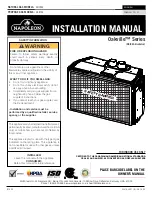
ChipCap® 2 Humidity and Temperature Sensor
34
Application Guide
7. Alarm Function (Optional)
7.1 Alarm Output
The alarm output can be used to monitor whether the Humidity reading has exceeded or fallen below pre-programmed
values. The alarm can be used to drive an open-drain load connected to VDD as shown in Figure 23 on page 36 or it
can function as a full push-pull driver. If a high voltage application is required, external devices can be controlled with
the Alarm pads, as demonstrated in Figure 21 on page 35 and Figure 22 on page 36.
In standard ChipCap 2 PDM mode, only the High Alarm can be used.
7.2 Alarm Registers
Four registers are associated with the alarm functions: Alarm_High_On, Alarm_High_Off, Alarm_Low_On, and
Alarm_Low_Off (see Table 14 on page 31 for EEPROM addresses). Each of these four registers is a 14-bit value that
determines where the alarms turn on or off. The two high alarm registers form the output with hysteresis for the
Alarm_High pin, and the two low alarm registers form the output with hysteresis for the Alarm_Low pin. Each of the
two alarm pins can be configured independently using Alarm_Low_Cfg and Alarm_High_Cfg located in EEPROM
word Cust_Config (see Table 16 on page 38 for bit assignments).
Note:
If two high alarms or two low alarms are needed, see the section Alarm Polarity on the next page
.
7.3 Alarm Operation
As shown in Figure 24 on page 37, the Alarm_High_On register determines where the high alarm trip point is and the
Alarm_High_Off register determines where the high alarm turns off if the high alarm has been activated. The high
alarm hysteresis value is equal to Alarm_High_On - Alarm_High_Off. The same is true for the low alarm where
Alarm_Low_On is the low alarm trip point with Alarm_Low_Off determining the alarm shut off point. The low alarm
hysteresis value is equal to Alarm_Low_Off - Alarm_Low_On. Figure 25 on page 37 shows output operation
flowcharts for both the Alarm_High and Alarm_Low pins.
7.4 Alarm Output Configuration
The user can select the output driver configuration for each alarm using the Output Configuration bit in the
Alarm_High_Cfg and Alarm_Low_Cfg registers in EEPROM word Cust_Config (see Table 16 on page 38 for bit
assignments). For applications, such as interfacing with a microcontroller or controlling an external device, select the
full push-pull driver for the alarm output type. For an application that directly drives a load connected to VDD, the
typical selection is the open-drain output type. An advantage of making an alarm output open drain is that in a system
with multiple devices, the alarm outputs of each ChipCap 2 can be connected together with a single pull-up resistance
so that one can detect an alarm on any device with a single wire.









































